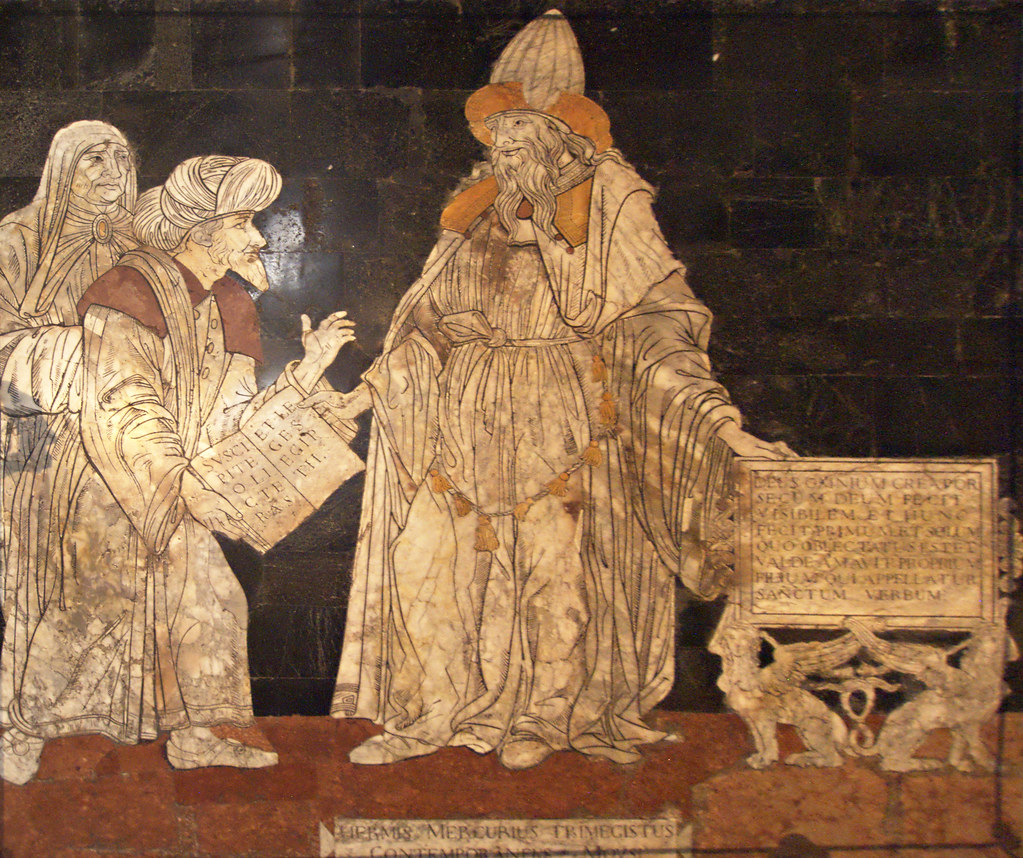
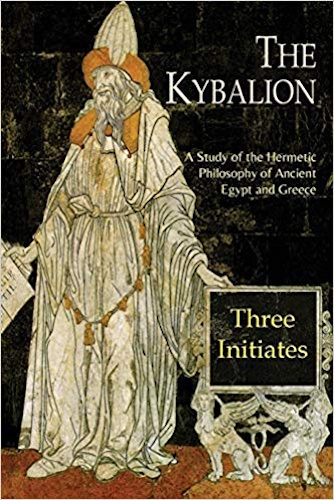

![Thrice-Greatest Hermes; Studies in Hellenistic Theosophy and Gnosis [Three Volumes in One] Thrice-Greatest Hermes; Studies in Hellenistic Theosophy and Gnosis [Three Volumes in One]](http://realityroars.com/images/affiliate-creative/thrice-greatest-hermes--studies-in-hellenistic-theosophy-and-gnosis.jpg)

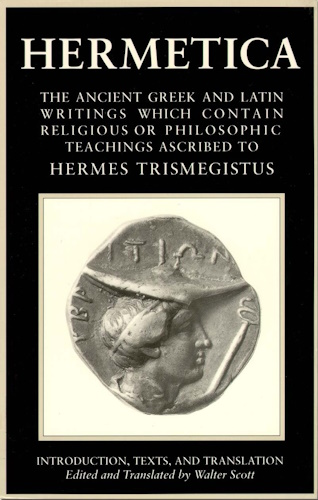



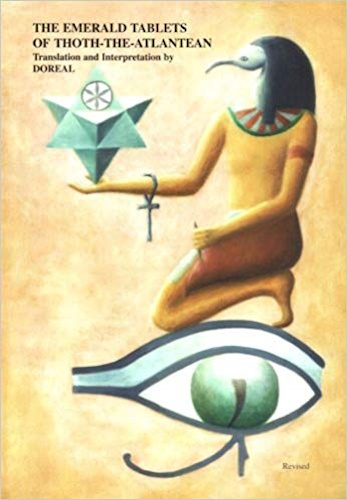

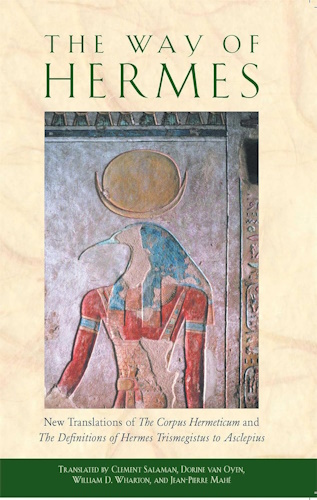

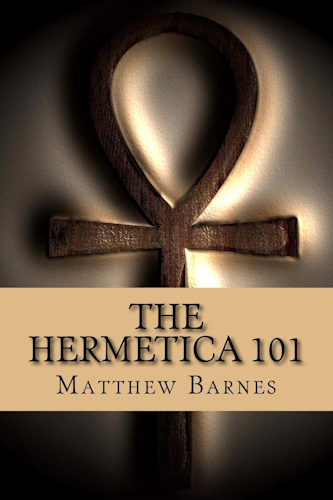

![]()
![]()
CHAPTER XII
CAUSATION
"Every Cause has its Effect; every Effect has its Cause;
everything happens according to Law; Chance is but a
name for Law not recognized; there are many planes of
causation, but nothing escapes the Law."--The Kybalion.
The great Sixth Hermetic Principle--the Principle of Cause and Effect--embodies the truth that Law pervades the Universe; that nothing happens by Chance; that Chance is merely a term indicating cause existing but not recognized or perceived; that phenomena is continuous, without break or exception.
The Principle of Cause and Effect underlies all scientific thought, ancient and modern, and was enunciated by the Hermetic Teachers in the earliest days. While many and varied disputes between the many schools of thought have since arisen, these disputes have been principally upon the details of the operations of the Principle, and still more often upon the meaning of certain words. The underlying Principle of Cause and Effect has been accepted as correct by practically all the thinkers of the world worthy of the name. To think otherwise would be to take the phenomena of the universe from the domain of Law and Order, and to relegate it; to the control of the imaginary something which men have called "Chance."
A little consideration will show anyone that there is in reality no such thing as pure chance. Webster defines the word "Chance" as follows: "A supposed agent or mode of activity other than a force, law or purpose; the operation or activity of such agent; the supposed effect of such an agent; a happening; fortuity; casualty, etc." But a little consideration will show you that there can be no such agent as "Chance," in the sense of something outside of Law-something outside of Cause and Effect. How could there be a something acting in the phenomenal universe, independent of the laws, order, and continuity of the latter? Such a something would be entirely independent of the orderly trend of the universe, and therefore superior to it. We can imagine nothing outside of THE ALL being outside of the Law, and that only because THE ALL is the LAW in itself. There is no room in the universe for a something outside of and independent of Law. The existence of such a Something would render all Natural Laws ineffective, and would plunge the universe into chaotic disorder and lawlessness.
A careful examination will show that what we call "Chance" is merely an expression relating to obscure causes; causes that we cannot perceive; causes that we cannot understand. The word Chance is derived from a word Meaning "to fall" (as the falling of dice), the idea being that the fall of the dice (and many other happenings) are merely a "happening" unrelated to any cause. And this is the sense in which the term is generally employed. But when the matter is closely examined, it is seen that there is no chance whatsoever about the fall of the dice. Each time a die falls, and displays a certain number, it obeys a law as infallible as that which governs the revolution of the planets around the sun. Back of the fall of the die are causes, or chains of causes, running back further than the mind can follow. The position of the die in the box; the amount of muscular energy expended in the throw; the condition of the table, etc., etc., all are causes, the effect of which may be seen. But back of these seen causes there are chains of unseen preceding causes, all of which had a bearing upon the number of the die which fell uppermost.
If a die be cast a great number of times, it will be found that the numbers shown will be about equal, that is, there will be an equal number of one-spot, two-spot, etc., coming uppermost. Toss a penny in the air, and it may come down either "heads" or "tails"; but make a sufficient number of tosses, and the heads and tails will about even up. This is the operation of the law of average. But both the average and the single toss come under the Law of Cause and Effect, and if we were able to examine into the preceding causes, it would be clearly seen that it was simply impossible for the die to fall other than it did, under the same circumstances and at the same time. Given the same causes, the same results will follow. There is always a "cause" and a "because" to every event. Nothing ever "happens" without a cause, or rather a chain of causes.
Some confusion has arisen in the minds of persons considering this Principle, from the fact that they were unable to explain how one thing could cause another thing--that is, be the "creator" of the second thing. As a matter of fact, no "thing" ever causes or "creates" another "thing." Cause and Effect deals merely with "events." An "event" is "that which comes, arrives or happens, as a result or consequent of some preceding event." No event "creates" another event, but is merely a preceding link in the great orderly chain of events flowing from the creative energy of THE ALL. There is a continuity between all events precedent, consequent and subsequent. There is a relation existing between everything that has gone before, and everything that follows. A stone is dislodged from a mountain side and crashes through a roof of a cottage in the valley below. At first sight we regard this as a chance effect, but when we examine the matter we find a great chain of causes behind it. In the first place there was the rain which softened the earth supporting the stone and which allowed it to fall; then back of that was the influence of the sun, other rains, etc., which gradually disintegrated the piece of rock from a larger piece; then there were the causes which led to the formation of the mountain, and its upheaval by convulsions of nature, and so on ad infinitum. Then we might follow up the causes behind the rain, etc. Then we might consider the existence of the roof In short, we would soon find ourselves involved in a mesh of cause and effect, from which we would soon strive to extricate ourselves.
Just as a man has two parents, and four grandparents, and eight great-grandparents, and sixteen great-great-grandparents, and so on until when, say, forty generations are calculated the numbers of ancestors run into many millions--so it is with the number of causes behind even the most trifling event or phenomena, such as the passage of a tiny speck of soot before your eye. It is not an easy matter to trace the bit of soot hack to the early period of the world's history when it formed a part of a massive tree-trunk, which was afterward converted into coal, and so on, until as the speck of soot it now passes before your vision on its way to other adventures. And a mighty chain of events, causes and effects, brought it to its present condition, and the later is but one of the chain of events which will go to produce other events hundreds of years from now. One of the series of events arising from the tiny bit of soot was the writing of these lines, which caused the typesetter to perform certain work; the proofreader to do likewise; and which will arouse certain thoughts in your mind, and that of others, which in turn will affect others, and so on, and on, and on, beyond the ability of man to think further-and all from the passage of a tiny bit of soot, all of which shows the relativity and association of things, and the further fact that "there is no great; there is no small, in the mind that causeth all."
Stop to think a moment. If a certain man had not met a certain maid, away back in the dim period of the Stone Age--you who are now reading these lines would not now be here. And if, perhaps, the same couple had failed to meet, we who now write these lines would not now be here. And the very act of writing, on our part, and the act of reading, on yours, will affect not only the respective lives of yourself and ourselves, but will also have a direct, or indirect, affect upon many other people now living and who will live in the ages to come. Every thought we think, every act we perform, has its direct and indirect results which fit into the great chain of Cause and Effect.
We do not wish to enter into a consideration of Free Will, or Determinism, in this work, for various reasons. Among the many reasons, is the principal one that neither side of the controversy is entirely right-in fact, both sides are partially right, according to the Hermetic Teachings. The Principle of Polarity shows that both are but Half-Truths the opposing poles of Truth. The Teachings are that a man may be both Free and yet bound by Necessity, depending upon the meaning of the terms, and the height of Truth from which the matter is examined. The ancient writers express the matter thus: "The further the creation is from the Centre, the more it is bound; the nearer the Centre it reaches, the nearer Free is it."
The majority of people are more or less the slaves of heredity, environment, etc., and manifest very little Freedom. They are swayed by the opinions, customs and thoughts of the outside world, and also by their emotions, feelings, moods, etc. They manifest no Mastery, worthy of the name. They indignantly repudiate this assertion, saying, "Why, I certainly am free to act and do as I please--I do just what I want to do," but they fail to explain whence arise the "want to" and "as I please." What makes them "want to" do one thing in preference to another; what makes them "please" to do this, and not do that? Is there no "because" to their "pleasing" and "Wanting"? The Master can change these "pleases" and "wants" into others at the opposite end of the mental pole. He is able to "Will to will," instead of to will because some feeling, mood, emotion, or environmental suggestion arouses a tendency or desire within him so to do.
The majority of people are carried along like the falling stone, obedient to environment, outside influences and internal moods, desires, etc., not to speak of the desires and wills of others stronger than themselves, heredity, environment, and suggestion, carrying them along without resistance on their part, or the exercise of the Will. Moved like the pawns on the checkerboard of life, they play their parts and are laid aside after the game is over. But the Masters, knowing the rules of the game, rise above the plane of material life, and placing themselves in touch with the higher powers of their nature, dominate their own moods, characters, qualities, and polarity, as well as the environment surrounding them and thus become Movers in the game, instead of Pawns-Causes instead of Effects. The Masters do not escape the Causation of the higher planes, but fall in with the higher laws, and thus master circumstances on the lower plane. They thus form a conscious part of the Law, instead of being mere blind instruments. While they Serve on the Higher Planes, they Rule on the Material Plane.
But, on higher and on lower, the Law is always in operation. There is no such thing as Chance. The blind goddess has been abolished by Reason. We are able to see now, with eyes made clear by knowledge, that everything is governed by Universal Law-that the infinite number of laws are but manifestations of the One Great Law-the LAW which is THE ALL. It is true indeed that not a sparrow drops unnoticed by the Mind of THE AL--that even the hairs on our head are numbered--as the scriptures have said There is nothing outside of Law; nothing that happens contrary to it. And yet, do not make the mistake of supposing that Man is but a blind automaton-far from that. The Hermetic Teachings are that Man may use Law to overcome laws, and that the higher will always prevail against the lower, until at last he has reached the stage in which he seeks refuge in the LAW itself, and laughs the phenomenal laws to scorn. Are you able to grasp the inner meaning of this?


![Thrice-Greatest Hermes; Studies in Hellenistic Theosophy and Gnosis [Three Volumes in One] Thrice-Greatest Hermes; Studies in Hellenistic Theosophy and Gnosis [Three Volumes in One]](http://realityroars.com/images/affiliate-creative/thrice-greatest-hermes--studies-in-hellenistic-theosophy-and-gnosis.jpg)











-
Urantia Book, 44:0.11 - The Celestial Artisans
Never in your long ascendancy will you lose the power to recognize your associates of former existences. Always, as you ascend inward in the scale of life, will you retain the ability to recognize and fraternize with the fellow beings of your previous and lower levels of experience. Each new translation or resurrection will add one more group of spirit beings to your vision range without in the least depriving you of the ability to recognize your friends and fellows of former estates.
-
Princess Bride 1987 Wallace Shawn (Vizzini) and Mandy Patinkin (Inigo Montoya)
Vizzini: HE DIDN'T FALL? INCONCEIVABLE.
Inigo Montoya: You keep using that word. I do not think it means what you think it means. -
Urantia Book, 117:4.14 - The Finite God
And here is mystery: The more closely man approaches God through love, the greater the reality -- actuality -- of that man. The more man withdraws from God, the more nearly he approaches nonreality -- cessation of existence. When man consecrates his will to the doing of the Father's will, when man gives God all that he has, then does God make that man more than he is.
-
Urantia Book, 167:7.4 - The Talk About Angels
"And do you not remember that I said to you once before that, if you had your spiritual eyes anointed, you would then see the heavens opened and behold the angels of God ascending and descending? It is by the ministry of the angels that one world may be kept in touch with other worlds, for have I not repeatedly told you that I have other sheep not of this fold?"
-
Urantia Book, Foreword - 0:12.12 - The Trinities
But we know that there dwells within the human mind a fragment of God, and that there sojourns with the human soul the Spirit of Truth; and we further know that these spirit forces conspire to enable material man to grasp the reality of spiritual values and to comprehend the philosophy of universe meanings. But even more certainly we know that these spirits of the Divine Presence are able to assist man in the spiritual appropriation of all truth contributory to the enhancement of the ever-progressing reality of personal religious experience—God-consciousness.
-
Urantia Book, 1:4.3 - The Mystery Of God
When you are through down here, when your course has been run in temporary form on earth, when your trial trip in the flesh is finished, when the dust that composes the mortal tabernacle "returns to the earth whence it came"; then, it is revealed, the indwelling "Spirit shall return to God who gave it." There sojourns within each moral being of this planet a fragment of God, a part and parcel of divinity. It is not yet yours by right of possession, but it is designedly intended to be one with you if you survive the mortal existence.
-
Urantia Book, 1:4.1 - The Mystery Of God
And the greatest of all the unfathomable mysteries of God is the phenomenon of the divine indwelling of mortal minds. The manner in which the Universal Father sojourns with the creatures of time is the most profound of all universe mysteries; the divine presence in the mind of man is the mystery of mysteries.
-
Urantia Book, 1:4.6 - The Mystery Of God
To every spirit being and to every mortal creature in every sphere and on every world of the universe of universes, the Universal Father reveals all of his gracious and divine self that can be discerned or comprehended by such spirit beings and by such mortal creatures. God is no respecter of persons, either spiritual or material. The divine presence which any child of the universe enjoys at any given moment is limited only by the capacity of such a creature to receive and to discern the spirit actualities of the supermaterial world.
-
Urantia Book, 11:0.1 - The Eternal Isle Of Paradise
Paradise is the eternal center of the universe of universes and the abiding place of the Universal Father, the Eternal Son, the Infinite Spirit, and their divine co-ordinates and associates. This central Isle is the most gigantic organized body of cosmic reality in all the master universe. Paradise is a material sphere as well as a spiritual abode. All of the intelligent creation of the Universal Father is domiciled on material abodes; hence must the absolute controlling center also be material, literal. And again it should be reiterated that spirit things and spiritual beings are real.
-
Urantia Book, 50:6.4 - Planetary Culture
Culture presupposes quality of mind; culture cannot be enhanced unless mind is elevated. Superior intellect will seek a noble culture and find some way to attain such a goal. Inferior minds will spurn the highest culture even when presented to them ready-made.
-
Urantia Book, 54:1.6 - True And False Liberty
True liberty is the associate of genuine self-respect; false liberty is the consort of self-admiration. True liberty is the fruit of self-control; false liberty, the assumption of self-assertion. Self-control leads to altruistic service; self-admiration tends towards the exploitation of others for the selfish aggrandizement of such a mistaken individual as is willing to sacrifice righteous attainment for the sake of possessing unjust power over his fellow beings.
-
Urantia Book, 54:1.9 - True And False Liberty
How dare the self-willed creature encroach upon the rights of his fellows in the name of personal liberty when the Supreme Rulers of the universe stand back in merciful respect for these prerogatives of will and potentials of personality! No being, in the exercise of his supposed personal liberty, has a right to deprive any other being of those privileges of existence conferred by the Creators and duly respected by all their loyal associates, subordinates, and subjects.
-
Urantia Book, 54:1.8 - True And False Liberty
There is no error greater than that species of self-deception which leads intelligent beings to crave the exercise of power over other beings for the purpose of depriving these persons of their natural liberties. The golden rule of human fairness cries out against all such fraud, unfairness, selfishness, and unrighteousness.

